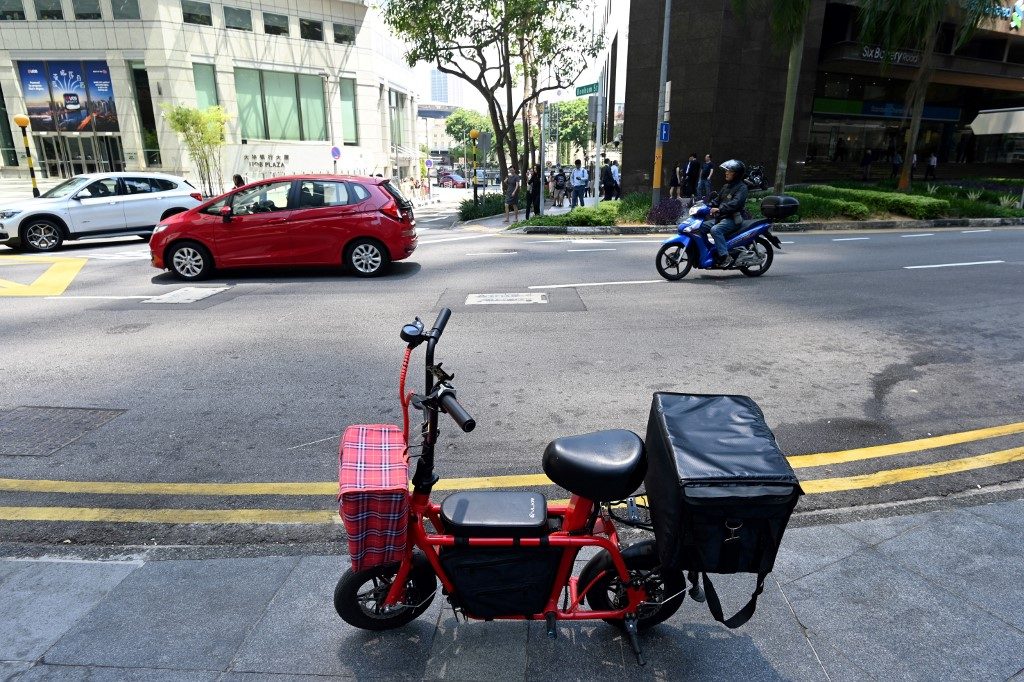SUMMARY
This is AI generated summarization, which may have errors. For context, always refer to the full article.

SINGAPORE – Electric scooter riders in Singapore were banned from footpaths Monday, November 4, and could face jail if they break the rule, after a series of accidents linked to the trendy two-wheelers sparked anger.
The city-state is the latest country to introduce new regulations to cope with a surge in the popularity of the contraptions, which many pedestrians view as silent menaces.
Tech-savvy Singapore has embraced the e-scooter craze but accidents – including fires blamed on charging devices and the death of an elderly cyclist in a September collision – triggered calls for a ban.
E-scooters were already banned from Singapore’s roads but the Land Transport Authority said the two-wheelers were now prohibited on all footpaths.
They can only be used on cycle paths and a network of routes connecting parks.
Most riders caught on footpaths until the end of the year will be given warnings but a strict approach will be taken from January 1, with offenders facing a jail term of up to two months and a maximum fine of Sg$2,000 ($1,500).
“This move is a necessary one to ensure pedestrian safety as incidents involving errant e-scooter riders continue to rise in spite of our heightened enforcement and education efforts,” the authority said in a statement.
Singapore had already introduced other rules, including a requirement to register devices and speed limits.
France last week issued a series of rules on the use of e-scooters, including setting maximum speed limits at 25 kilometers (15 miles) per hour for riders who must be at least 12 years old.
Riding on sidewalks will be prohibited unless a city permits them in certain areas, and at walking speed only.
Supporters say the devices can plug gaps in public transport networks by helping commuters cover the short stretch from home to the bus or subway station, and can reduce dependence on cars. – Rappler.com
Add a comment
How does this make you feel?
There are no comments yet. Add your comment to start the conversation.